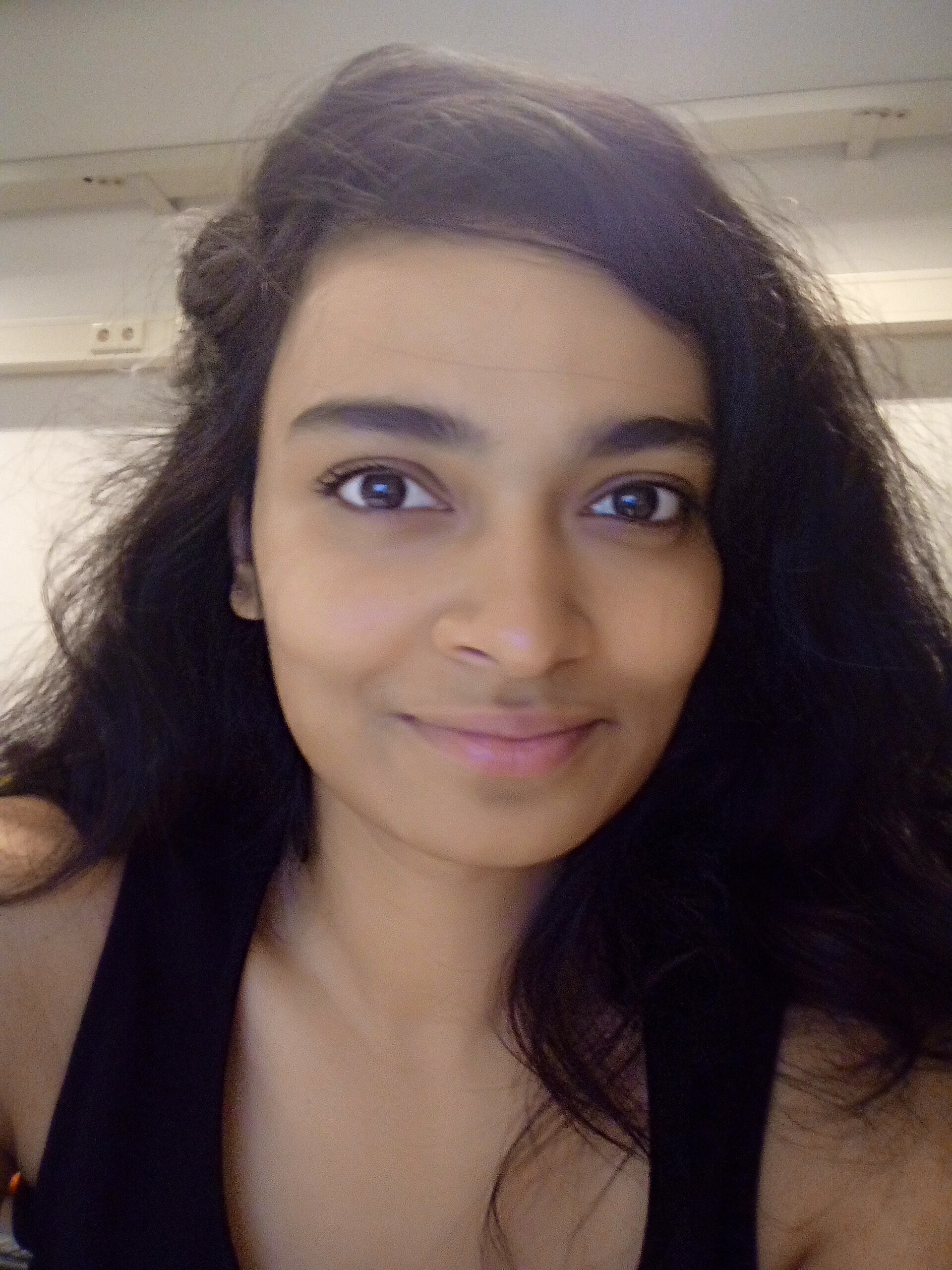
Tonnishtha Dasgupta
Leonard S. Ornstein Laboratory, room 0.16
Princetonplein 1, 3584 CC Utrecht
P.O. Box 80 000, 3508 TA Utrecht
The Netherlands
phone: +31 (0)30 253 2467
secretariat: +31 (0)30 253 2952
e-mail: t.dasgupta@uu.nl
Research
Promotor: Prof. dr. ir. M. Dijkstra
Funding: FOM
Employed: 15 July 2014 – 14 November 2018
Self-assembly of hard spheres under gravity and spherical confinement
We study the sedimentation of colloidal hard spheres using event-driven Brownian Dynamics simulations (of pure and binary mixtures) to investigate the formation of crystal phases along the sedimentation column. We obtain large single FCC crystals with very few extended defects from sedimenting pure hard spheres at high speeds on an FCC (100) template [1]. Such a crystal is shown in Figure 1. We also study binary hard spheres under sedimentation, for which case we correlate the sedimentation equilibria to the bulk thermodynamics using a theoretical construct known as a stacking diagram [2]. A stacking diagram comprises a set of all possible stacking sequences of phases formed by binary mixtures in a sedimentation column. Our aim is to obtain the stable Laves phase (a binary crystal with photonic properties), which is known to form in bulk for a diameter ratio of 0.76 to 0.84, via sedimentation.
In another line of research, we are investigating the self-assembly of binary hard spheres under spherical confinement. These simulations attempt to mimic the self-assembly of nanoparticles inside evaporating droplets of an oil-in-water emulsion into binary supraparticles [3]. However the parameter space for simulating these supraparticles is extensive and as such poses a challenging problem.
Figure 1: Large single crystal of FCC, with few extended defects, formed on deposition of pure hard spheres on the FCC (100) template at Pe = 10. Particles are coloured as follows (i) blue: fcc-like, (ii) green: fluid-like and (iii) lilac: defects.
[1] K.E. Jensen et al., Soft Matter 9, 320-328 (2013)
[2] D. Heras et al., Soft Matter 9, 8636-8641 (2013)
[3] T. Kister et al., Nanoscale 8, 13377-13384 (2016)

